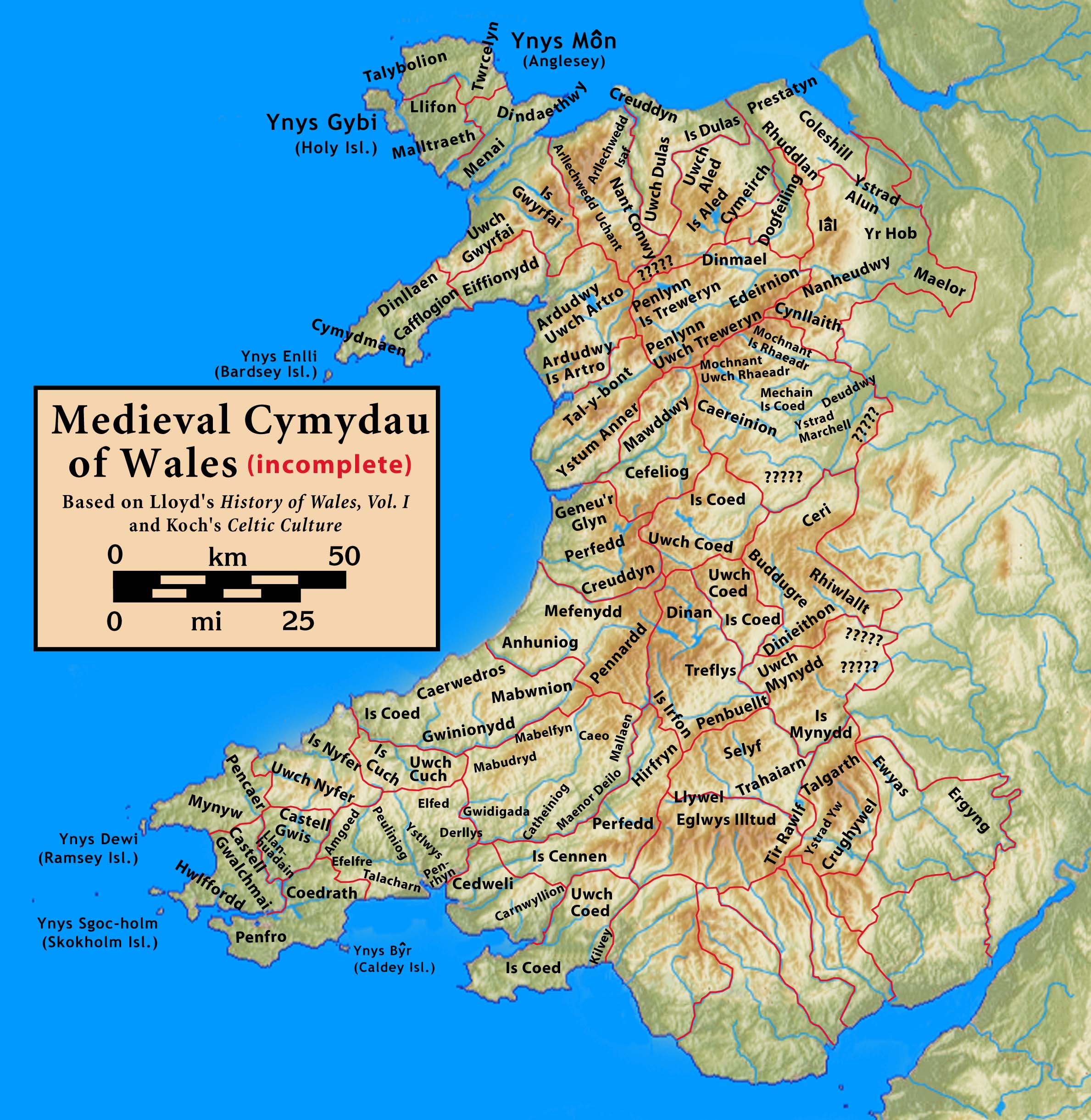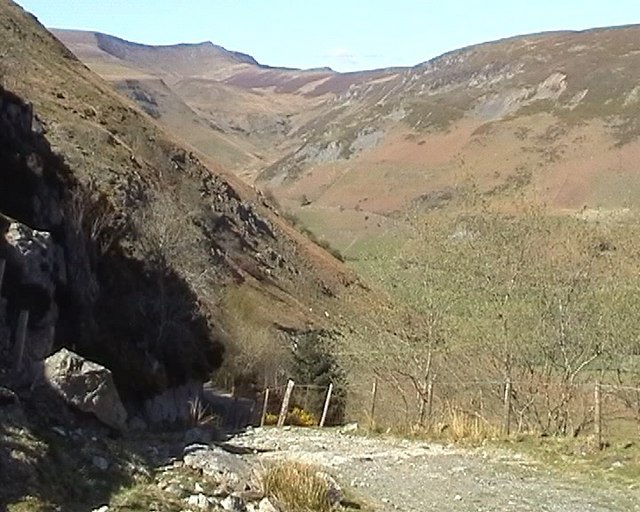Mochnant on:
[Wikipedia]
[Google]
[Amazon]
 Mochnant, a name translating as "the rapid stream", was a medieval cantref in the
Mochnant, a name translating as "the rapid stream", was a medieval cantref in the 
 Mochnant, a name translating as "the rapid stream", was a medieval cantref in the
Mochnant, a name translating as "the rapid stream", was a medieval cantref in the Kingdom of Powys
The Kingdom of Powys ( cy, Teyrnas Powys; la, Regnum Poysiae) was a Welsh successor state, petty kingdom and principality that emerged during the Middle Ages following the end of Roman rule in Britain. It very roughly covered the northern t ...
.
In the 12th century it was divided into the commote
A commote (Welsh ''cwmwd'', sometimes spelt in older documents as ''cymwd'', plural ''cymydau'', less frequently ''cymydoedd'')''Geiriadur Prifysgol Cymru'' (University of Wales Dictionary), p. 643 was a secular division of land in Medieval Wales ...
s of Mochnant Is Rhaeadr (in the north) and Mochnant Uwch Rhaeadr (in the south) (''Is'' signifying 'below' and ''Uwch'' 'above' the River Rhaeadr).
Its north-west border was with the cantref of Penllyn, originally in Powys but which became annexed to the Kingdom of Gwynedd
The Kingdom of Gwynedd (Medieval Latin: ; Middle Welsh: ) was a Welsh kingdom and a Roman Empire successor state that emerged in sub-Roman Britain in the 5th century during the Anglo-Saxon settlement of Britain.
Based in northwest Wales, th ...
during the time of Owain Brogyntyn
Owain ''Brogyntyn'' ap Madog (fl. 1160–1186) was the third and illegitimate son of king Madog ap Maredudd, the last king of a united Kingdom of Powys. He was the son of Madog by the daughter of the ''Maer du'' or "black mayor" of Rûg in ...
. It bordered the cantrefi of Caereinion and Mechain
Mechain was a medieval cantref in the Kingdom of Powys. This cantref has also been referred to as Y Fyrnwy (''Vyrnwy''). Mechain may owe its name to the River Cain which flows through it on its way to join the River Vyrnwy; 'Me' or 'Mach' (c.f ...
to the south, and Maelor
The Maelor is an area of north-east Wales along the border with England. It is now entirely part of Wrexham County Borough.
The name ''Maelor'' is an old Welsh word: it can be translated as "land of the prince", from ''mael'' ("prince") and ''l ...
to the north-east. The administrative centre was Llanrhaeadr-ym-Mochnant
Llanrhaeadr-ym-Mochnant () is a village, community and an ecclesiastical parish in the extreme north of Powys, Wales; about 9 miles west of Oswestry and 12 miles south of Llangollen, on the B4580. It lies near the foothills of the Berwyn mountains ...
in Mochnant Is Rhaeadr.
After the death of Madog ap Maredudd
Madog ap Maredudd ( wlm, Madawg mab Maredud, ; died 1160) was the last prince of the entire Kingdom of Powys, Wales and for a time held the Fitzalan Lordship of Oswestry.
Madog was the son of King Maredudd ap Bleddyn and grandson of King Bledd ...
and his eldest son and heir in 1160, the kingdom was divided up between his surviving sons Gruffydd Maelor
Gruffydd Maelor (died 1191) was Prince of Powys Fadog in Wales.
He is known as Gruffydd Maelor I to distinguish him from his grandson, Gruffydd Maelor II (died 1269).
Lineage
He was a son of Prince Madog ap Maredudd by Susanna, daughter of Ki ...
, Owain Fychan
Owain Fychan ap Madog (alternatively ''Owain Vychan ap Madoc'') (c. 1125 – 1187) was styled Lord of Mechain Is Coed and one of the sons of Madog ap Maredudd. His mother was Susanna, daughter of Gruffudd ap Cynan.
Division of the Kingdom of Po ...
and Owain Brogyntyn
Owain ''Brogyntyn'' ap Madog (fl. 1160–1186) was the third and illegitimate son of king Madog ap Maredudd, the last king of a united Kingdom of Powys. He was the son of Madog by the daughter of the ''Maer du'' or "black mayor" of Rûg in ...
, his nephew Owain Cyfeiliog
Owain ap Gruffydd (c. 1130–1197) was a prince of the southern part of Powys and a poet. He is usually known as Owain Cyfeiliog to distinguish him from other rulers named Owain, particularly his contemporary, Owain ap Gruffydd of Gwynedd, who is k ...
and his half-brother Iorwerth Goch. Mochnant was initially given to Iorwerth Goch, but in 1166 he was ejected by Owain Cyfeiliog and Owain Fychan, who took control of Mochnant Uwch Rhaedr and Mochnant Is Rhaedr respectively: Iorwerth later established himself in the Ceiriog Valley, becoming the castellan of Chirk.Stevenson (2016) ''Medieval Powys: Kingdom, Principality and Lordships, 1132–1293'', p. 286
The northern part of Powys, including Mochnant Is Rhaeadr, later became Powys Fadog
Powys Fadog (English: ''Lower Powys'' or ''Madog's Powys'') was the northern portion of the former princely realm of Powys, which split in two following the death of Madog ap Maredudd in 1160. The realm was divided under Welsh law, with Madog's ...
; the southern part including Mochnant Uwch Rhaeadr became Powys Wenwynwyn
Powys Wenwynwyn or Powys Cyfeiliog was a Welsh kingdom which existed during the high Middle Ages. The realm was the southern portion of the former princely state of Powys which split following the death of Madog ap Maredudd of Powys in 1160: the ...
. Following Edward I's conquest of Wales (1282–1283), Mochnant Is Rhaeadr become part of the Marcher Lordship
A Marcher lord () was a noble appointed by the king of England to guard the border (known as the Welsh Marches) between England and Wales.
A Marcher lord was the English equivalent of a margrave (in the Holy Roman Empire) or a marquis (in ...
of Chirk, but Mochnant Uwch Rhaeadr remained under Welsh rule. Later, Mochnant Is Rhaeadr was in Denbighshire, while Mochnant Uwch Rhaeadr was in Montgomeryshire.
The name survives in the placename Llanrhaeadr-ym-Mochnant, this village also had the ancient commote's ecclesiastical centre at the church of St Dogfan; ''ym Mochant'' means 'in Mochnant'.

References
{{reflist Cantrefs Commotes History of Powys